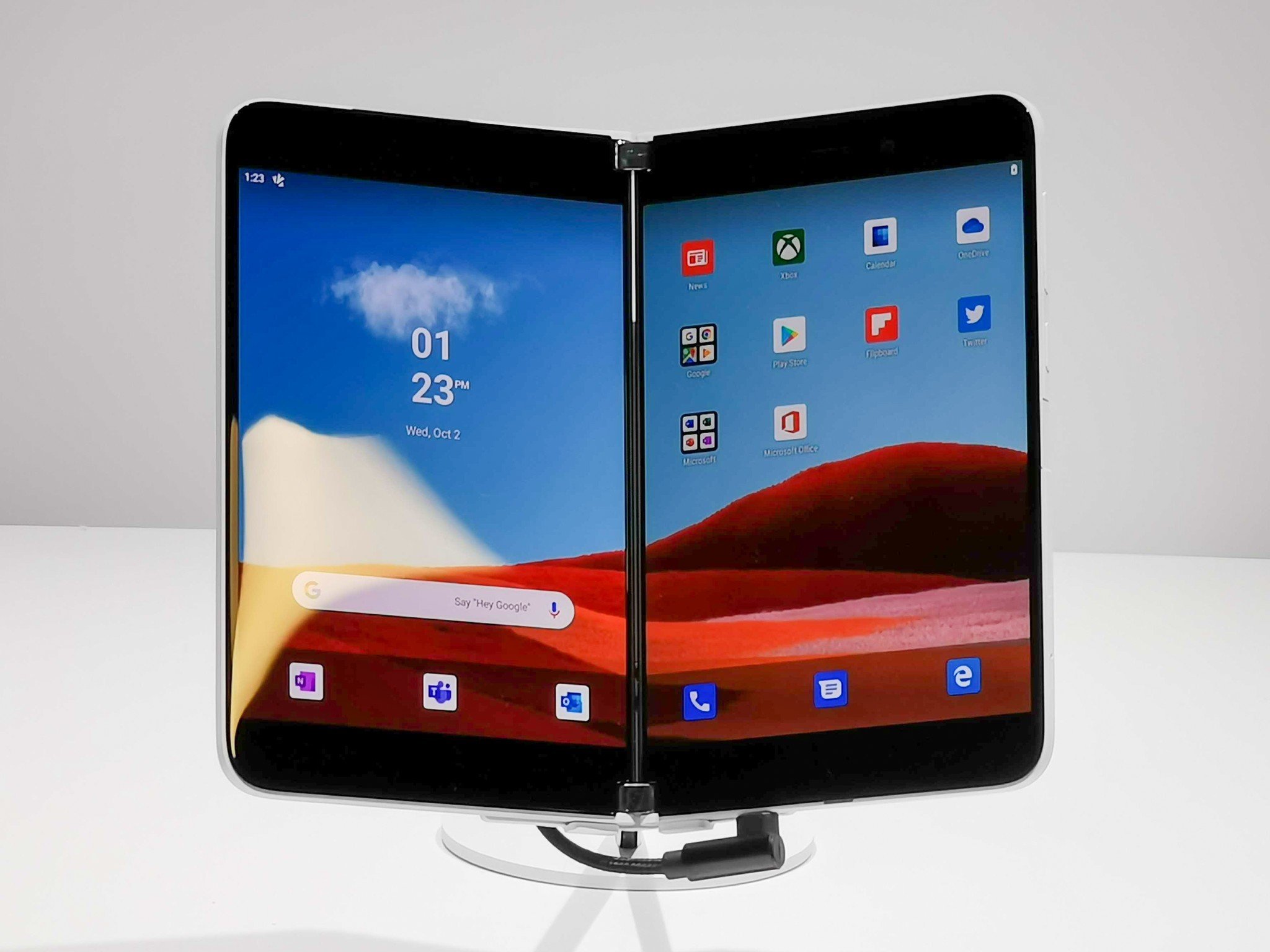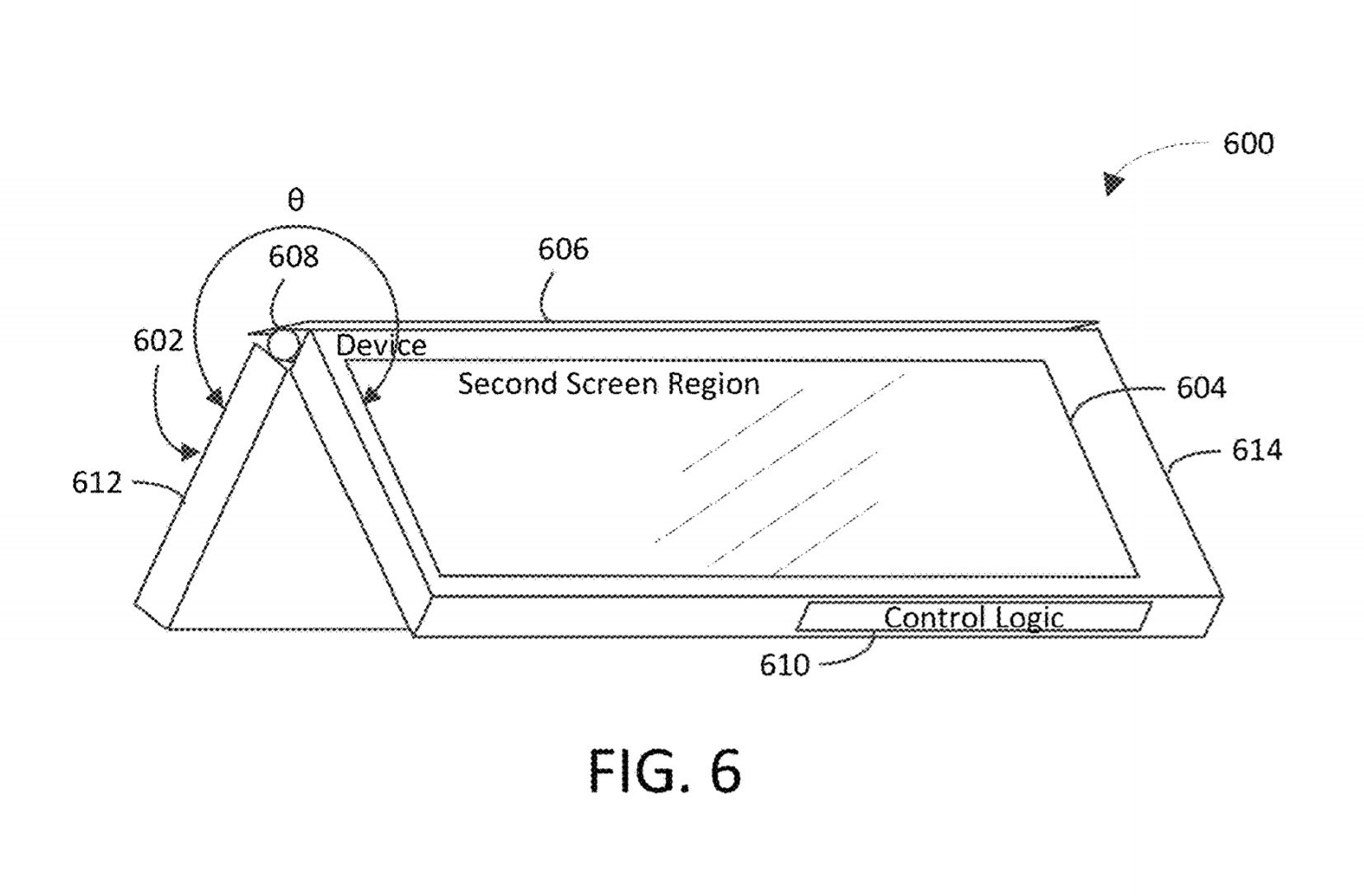A Microsoft Surface phone could have THREE screens, according to patent
Microsoft might add a third screen to its mobile Surface design, according to a patent.

What you need to know
- A patent shows a potential phone from Microsoft that has three screens.
- The design has a thinner third display set between two larger displays.
- As is the case with all patents, this design might never be released or used in a product.
Microsoft's Surface Duo is set to come out later this year. That device has two displays attached together by a hinge. A recently published patent from Microsoft shows off designs for a device that looks similar to the Surface Duo, but that has three screens (via Windows Latest). The designs in the patent have a thin third display set between the two larger displays. As is the case with all patents, the designs shown off might never be used in a device.
The patent illustrates and describes a design of a device that has a third display that responds to the configuration of the device. For example, if the device was folded closed, the third display could show controls or content similar to the Samsung Edge display. If the device is folded open, the middle display could bridge the gap between the two larger displays. One portion of the patent reads:
In a first implementation of the first aspect of the example device, the determination logic is configured to determine one or more virtual controls to be displayed on the third screen region based at least in part on the hinge angle being greater than zero degrees and less than 180 degrees.
The patent also states:
For instance, a state of a hinge that is coupled between a first screen region and a second screen region may be determined. Information that is to be displayed on a third screen region that is provided on the hinge may be determine based at least in part on the state of the hinge.

It's important to note that while these designs could refer to a phone or cellular device similar to the Surface Duo, they could also be used in a mobile computer like the Surface Neo. Any mobile device could also not be a Surface device, but considering the Surface Duo and Surface Neo are under the Surface brand, it seems likely that the potential device could be a Surface. The patent reads:
The mobile device 1400 may be any of a variety of computing devices (e.g., cell phone, smartphone, handheld computer, Personal Digital Assistant (PDA), etc.) and may allow wireless two-way communications with one or more mobile communications networks 1404, such as a cellular or satellite network, or with a local area or wide area network. (Emphasis added).
The first claim of the patent gives a good summary of the overall concept:
A device comprising: a plurality of screen regions, including at least a first screen region, a second screen region, and a third screen region; a hinge coupled between the first screen region and the second screen region to provide a hinge angle, the third screen region provided on the hinge; and one or more processors that perform operations comprising: determine one or more virtual controls to be displayed on the third screen region based at least in part on the hinge angle being greater than zero degrees and less than 180 degrees, the one or more virtual controls enable a user of the device to provide an input to control an application that is displayed on at least one of the first screen region or the second screen region.
A device with three screens could provide unique functionality for a mobile device, such as seeing notifications or controls when the phone was closed, but it would also likely have some issues. Presumably, a third screen between two other screens would have gaps on each side, making viewing content across all three screens awkward. Patent drawings are basic and aim to illustrate concepts, not final designs, so it's unclear how large any potential gaps would be.
The patent was filed on August 7, 2019, and was published on March 31, 2020.
Get the Windows Central Newsletter
All the latest news, reviews, and guides for Windows and Xbox diehards.

Sean Endicott is a tech journalist at Windows Central, specializing in Windows, Microsoft software, AI, and PCs. He's covered major launches, from Windows 10 and 11 to the rise of AI tools like ChatGPT. Sean's journey began with the Lumia 740, leading to strong ties with app developers. Outside writing, he coaches American football, utilizing Microsoft services to manage his team. He studied broadcast journalism at Nottingham Trent University and is active on X @SeanEndicott_ and Threads @sean_endicott_.
